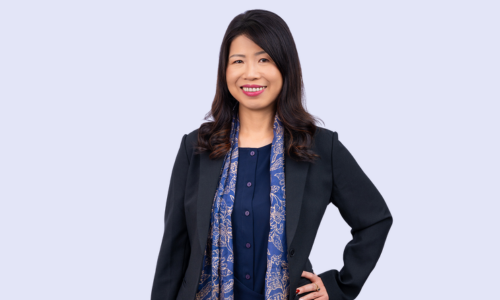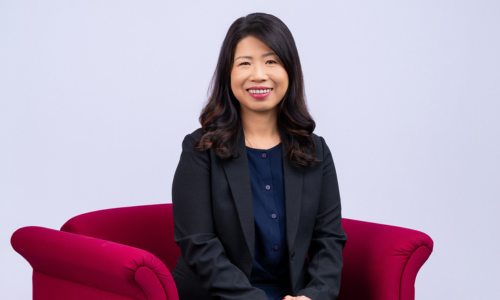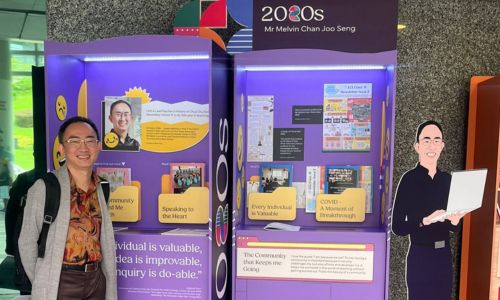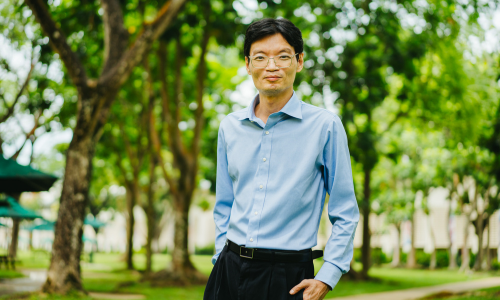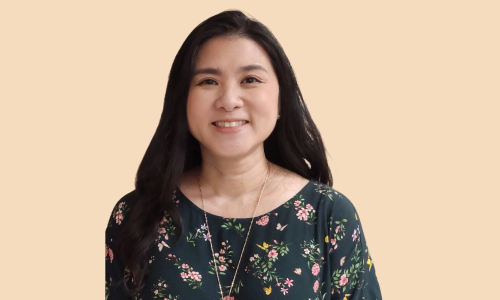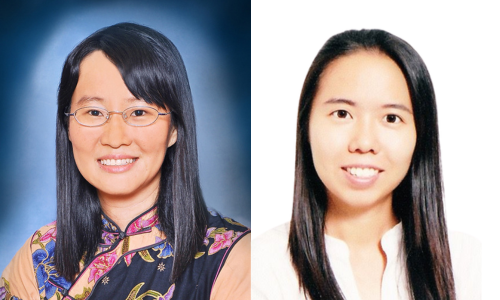A Classroom Without Walls
Many might think that outdoor education merely involves giving students a chance to try their hands at fun outdoor activities. However, converting an otherwise concrete classroom into one that is surrounded by the natural environment actually provide learners with more than just that. This inspired Ahmad Ibrahim Secondary School to set its vision to be a place where all learners have access to the great outdoors as part of the curriculum.
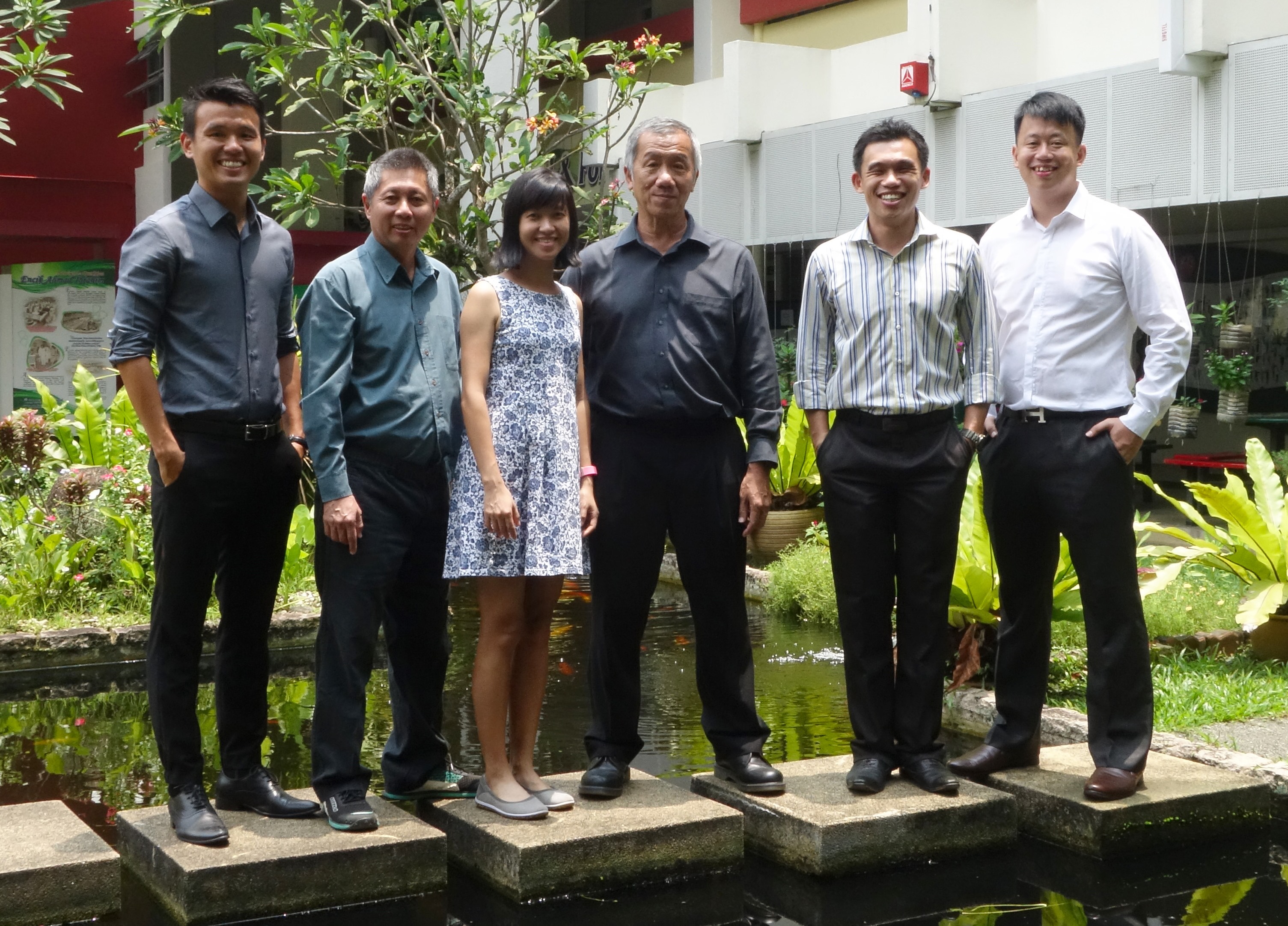
(From left) Yao Zijian, Michael Loke Wing Cheong, Lilian Loh Yen Cheng, Tan Boon Seng, Ryan Fong Tjen Shan and Toh Wei Xiong Tommy
What better way to get students interested in the natural environment than opening up opportunities for them to experience learning beyond the concrete classroom?
In 2005, Ahmad Ibrahim Secondary School (AISS) did just that when the Outdoor Learning Experience (OLE) programme was conceptualized. Led by Mr Tan Boon Seng and five other colleagues, their primary focus is to expose students to their environment to inculcate their love of the outdoors and a sense of belonging to the place they live in.
“The exposure to outdoor activities develops students’ physical skills, knowledge and attitude,” Boon Seng explains. “It also encourages them to be active and adopt a healthy lifestyle.”
The Outdoor Learning Experience
“The exposure to outdoor activities develops students’ physical skills, knowledge and attitude; it also encourages them to be active and adopt a healthy lifestyle.”
– Tan Boon Seng, Ahmad Ibrahim Secondary School
The school’s effort was further affirmed when the Learning for Life Programme (LLP) was introduced in 2014 by Minister for Education Mr Heng Swee Keat which emphasizes real-life experiences to develop character and values, among many others.
“We have been running OLE since 2005 so when the LLP was introduced, our school leader decided to make OLE the school’s niche programme under the LLP initiative,” shares Boon Seng. “Before this, our niche area was in shooting.”
Jasmine Ser, a household name among Singaporeans, is one of AISS’ notable alumni who began her shooting journey with the school’s previous niche programme.
However, shooting as a sport could not be offered to every student – a requirement under the LLP programme – due to the large expenses involved. As such, OLE was a more practical alternative for the entire school.
As part of the new LLP structure, OLE now revolves around three main domains: outdoor, personal and social development, and environmental education, which is a new addition.
“Since they are outdoors, it’s a good chance and avenue for us to get them to know about their environment,” Boon Seng shares, adding that “more importantly, we feel that they can familiarize themselves with the places we have in Singapore so that they know what they have locally.”
Learning from and Reflecting on Challenges
To build resilience in students; for Boon Seng, that is also something he hopes to achieve through the OLE programme on top of inculcating a love for the outdoors in them.
When students first hear of the long travel distance they have to embark on for some activities – such as kayaking a total distance of 16km – many think it is an impossible feat to achieve. “It is okay if some students cannot achieve it,” he says. “We will talk to them about the things that they have learned through the activity itself.”
Following these OLE activities, students pen down their reflections and share their thoughts on how they have fared with their classmates. “Normally, when students write their reflections, they are quite superficial – ‘tired’, ‘boring’, ‘interesting’, ‘exciting’,” Boon Seng shares. To address this, Boon Seng and his team provide students with a structure that helps students to reflect better. “In this structure, students talk about what happened, how they feel, what they learned and how they can apply it,” he adds.
Boon Seng feels that doing reflections on the activities are equally, if not more, important to the completion of the activity itself. Focusing on students’ personal and social developments through the outdoor experience, reflections encourage students to share more meaningfully about what they learned about themselves, others and the environment. This way, the internalization of learning goes much deeper and further.
“Students will share whether they enjoy the activity, whether the activity is challenging, and whether there is learning opportunity,” he says. “We hope to take them out of their comfort zone so that they can grow through the challenges they faced.”
And much like the students, the teachers involved also benefit from OLE.
“It is okay if some students cannot complete certain activities – we will talk to them about the things that they have learned through the activity itself.”
– Boon Seng believes that doing reflections of the activities is important for students’ learning
Learning alongside Students
To say that “it is challenging” to get teachers on board OLE is an understatement. Boon Seng shares that it wasn’t easy to get them involved in the beginning and even if they were, their involvement varied. But those who fully participated in an experience with their students were surprised to find it especially rewarding.
“It’s actually very meaningful because when you walk with the kids, you hear them talk and you really get to know them,” Boon Seng shares. “You can see them out there when they help each other naturally and you just get to know who they really are. It’s very genuine and authentic.” This is something that teachers rarely get to see and experience in the classroom setting.
Boon Seng also noticed that increasingly, the AISS teachers are participating in the outdoor activities with the students and even organizing a cycling trip among themselves. “Before this, they were non-cyclists. Suddenly, a teacher bought a bicycle for himself and started cycling at the park connector,” he shares.
For AISS, OLE is now very much a part of the school identity so much so that the OLE t-shirt has even replaced the school uniform on the school’s graduation bear. There is also strong support from the school principal, Ms Chew Ing Lim, who speaks with students about their OLE experiences.
Ultimately, Boon Seng admits that a lot of planning and manpower is required for OLE to be sustainable in the years to come. However, he believes it is beneficial in the long run. He says, “It achieves many purposes – physical activity, healthy lifestyle and getting to know a place better. It is definitely worth the effort.”

